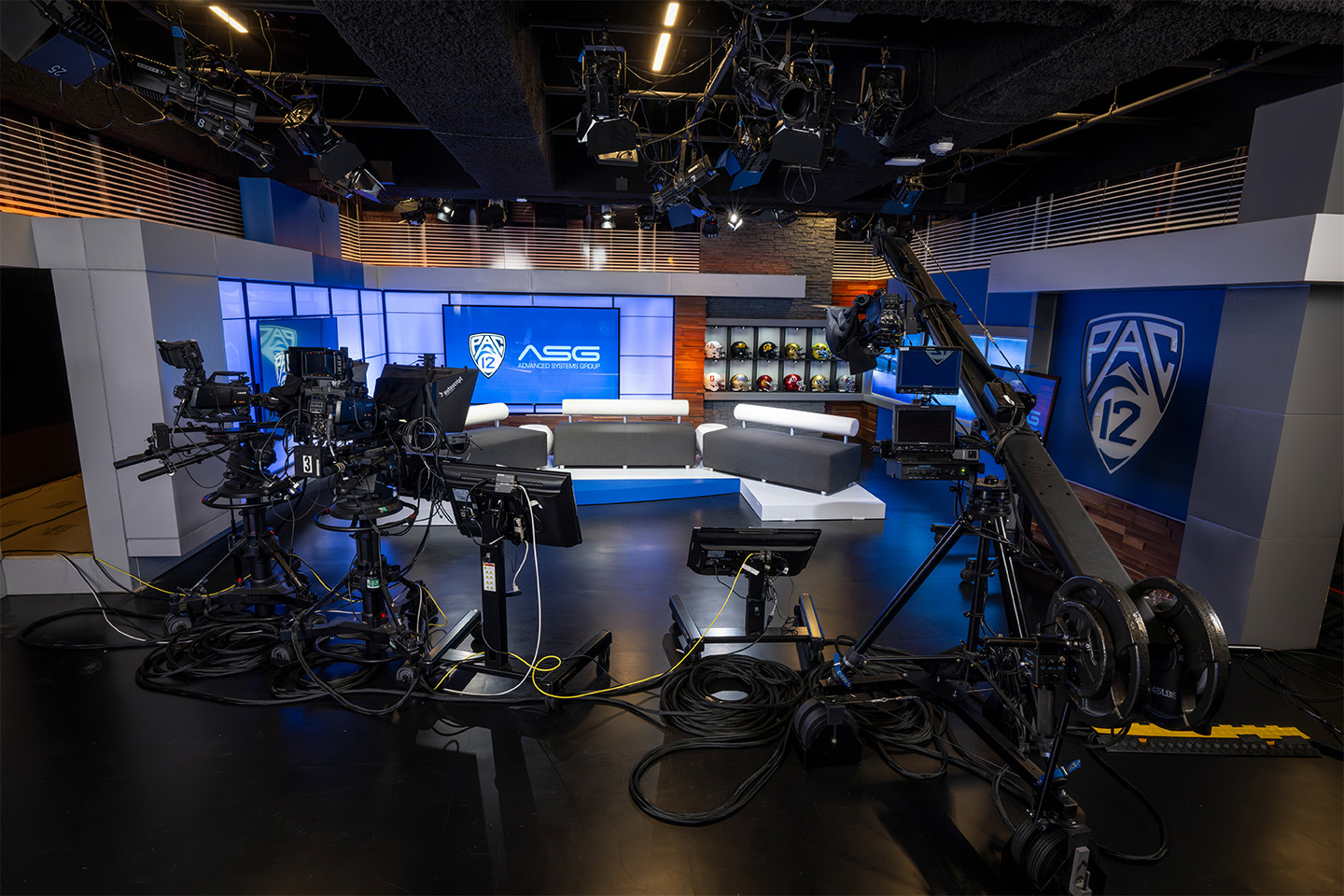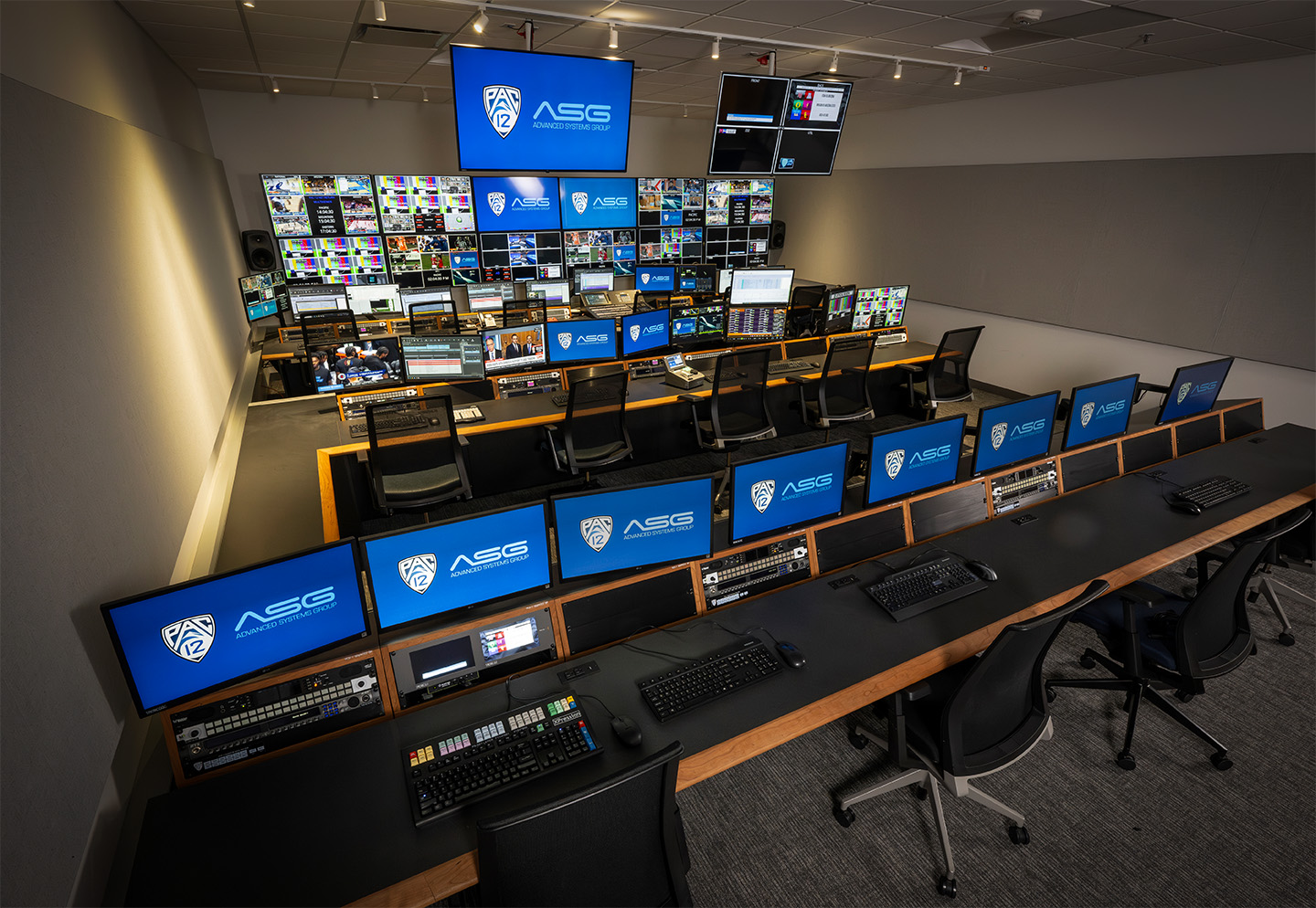Case Study: ASG and Pac-12 team up to architect production facility

Subscribe to NCS for the latest news, project case studies and product announcements in broadcast technology, creative design and engineering delivered to your inbox.
Advanced Systems Group (ASG) has completed the design and construction of a new broadcast and production facility for the Pac-12 Networks. This project represented a strategic move to relocate and upgrade the network’s studio and production capabilities within a constrained timeline of 12 months.
The Pac-12 Networks, a sports-oriented digital and satellite television network owned by its 12 member universities, faced the challenge of moving its facilities to San Ramon, California. This move was necessitated by the ending of its downtown San Francisco lease and the need to update its aging technical infrastructure while reducing operational costs.
The network is responsible for producing telecasts of approximately 850 collegiate events annually, requiring a facility capable of supporting this extensive output.
Broadcast facility design
The new 42,000 square-foot facility, designed and built by ASG, had to be SMPTE ST-2110 compliant, a standard for professional media over managed IP networks.
The project included five production control rooms, five audio control rooms, a studio, four software-defined production control rooms, a replay room, and a large graphics bullpen, with a central equipment room acting as the operational hub.
Strategic decisions
Based on experience and operational insights from a decade of broadcasting, Pac-12 Networks opted for a facility with more control rooms and fewer studios.
This decision supported the network’s hub-and-spoke broadcasting model, which minimizes on-site staff at sporting events by backhauling audio and video to centralized control rooms for production. This model has proved efficient and cost-effective, leveraging the universities’ Internet2 IP backbone for A/V transport.


Technical challenges and solutions
The adoption of the SMPTE ST-2110 standard posed interoperability challenges due to its recent introduction and the engineering complexity of ensuring compatibility among various vendors’ products. Pandemic-related delays in delivery dates also impacted the project’s timing.
Despite these challenges, ASG, in collaboration with vendors such as Arista Networks and Imagine Communications, managed to meet the project deadlines. The facility’s design required extensive testing and adaptation to ensure that the hardware and software components could function seamlessly in a real-world environment.
Collaborative effort
The success of the project was attributed to the collaborative efforts between ASG, the Pac-12 Networks, architectural and acoustics firms, and technology vendors.
Key personnel from ASG, including Michele Ferreira, Vice President of Systems Integration, and Garrick Huey, Regional Sales Leader, played crucial roles in managing the project and maintaining vendor relationships. The engineering and design teams faced the complex task of integrating the SMPTE ST-2110 protocol, which involved coordinating the transport, control, and synchronization of separate data streams for audio, video, control, and metadata.
A facility for the future
The choice to build an ST 2110 compliant facility was driven by the Pac-12 Networks’ vision for future-proofing their production capabilities. The new facility’s IP-based infrastructure enables more efficient and flexible production workflows, supporting the network’s commitment to delivering a wide range of sports programming.
This approach also allows for the incorporation of the facility into the existing high-speed university network infrastructures, enhancing connectivity and production efficiency.
Subscribe to NCS for the latest news, project case studies and product announcements in broadcast technology, creative design and engineering delivered to your inbox.





tags
Advanced Systems Group, Arista, Imagine Communications, Pac-12 Networks, SMPTE, SMPTE ST 2110
categories
Broadcast Facility, Broadcast Facility Technology, Case Study, Heroes, Sports Broadcasting & Production, Voices